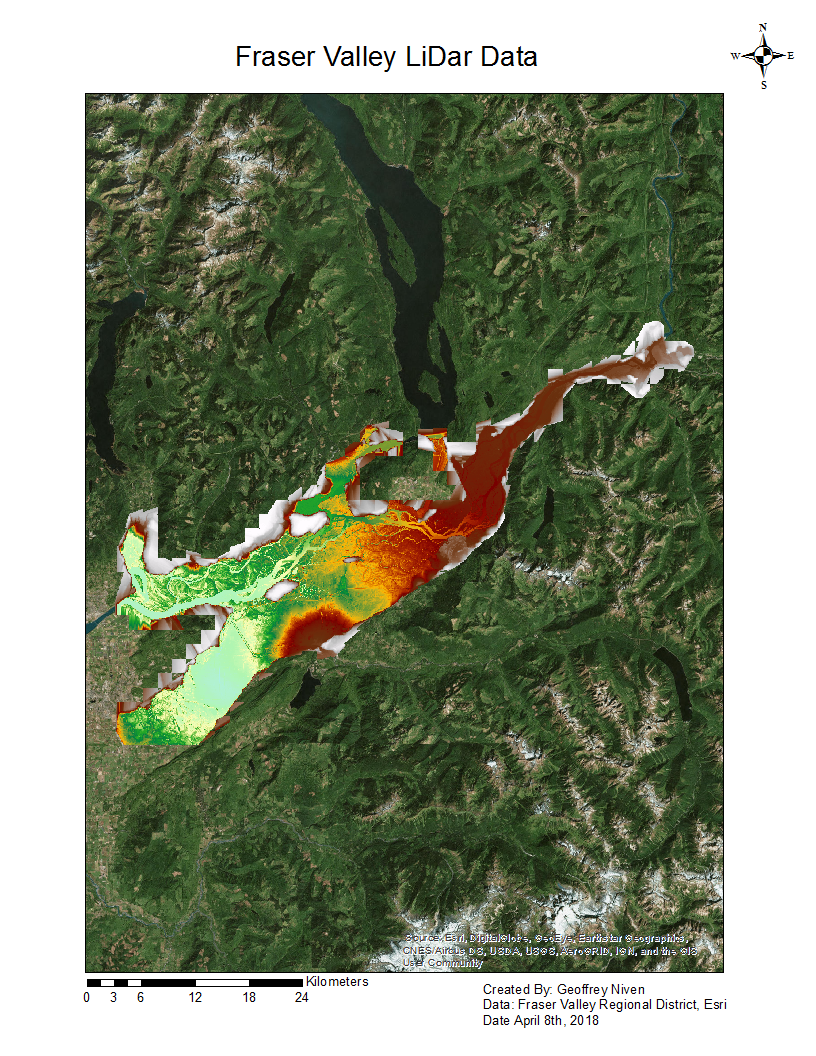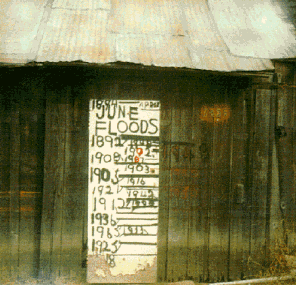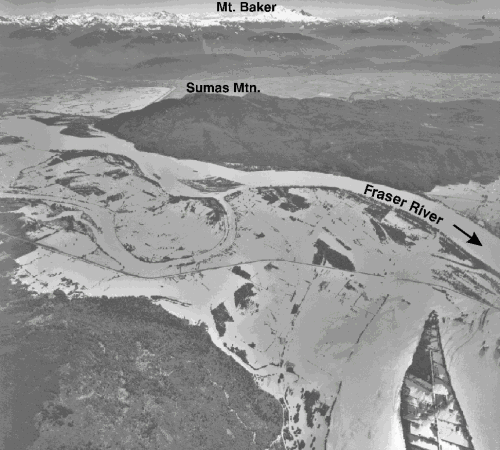We would like to thank Fraser Valley Regional District for providing us with the valuable LiDAR data of the Fraser Valley. Further we would like to thank our project liaison John Clague for his valued input in defining the scope of the study and his continued advice. We would also like to thank David Swanlund for providing technical support and Nadine Schuurman for guidance.
BBC. KS3 Bitesize geography. Retrieved from http://www.bbc.co.uk/bitesize/ks3/geography/physical_processes/rivers_flooding/revision/7/.
Berto, F. 2017. Cellular Automata. Stanford Encyclopedia of Philosophy. https://plato.stanford.edu/entries/cellular-automata/
Breckenridge, J. 1895, December 26. A WILD NIGHT ON THE FRASER.: Afloat in a Flood on a Ferry-Raft.--A Work of Rescue. The Youth’s Companion (1827-1929); Boston,: 665.
Burakov, D.A., and Ivanova, O.I. 2010. Analysis of formation and forecast of spring snowmelt flood runoff in forest and forest-steppe basins of Siberian rivers. Russian Meteorology and Hydrology, 35: 421–431. doi:10.3103/S1068373910060099.
Burrel, B.C., Davar, K., Hughes, R. 2007. A Review of Flood Management Considering the Impacts of Climate Change, Water International, 32:3, 342-359, DOI:10.1080/02508060708692215
Cai, X., Li, Y., Guo, X., Wu, W. 2014. Mathematical model for flood routing based on cellular automaton. Water and Science Engineering. Vol. 7(2). pp.133-142/. doi:10.3882/j.issn.1674-2370.2014.02.002.
CGEN. 1995. Vancouver-Fraser Floods. Available from http://www.cgenarchive.org/vancouver-fraserfloods.html [accessed 25 February 2018].
Chen, J., Hill, A., Urbano, L. 2009. A GIS based model for urban flood inundation. Journal of Hydrology. Vol 373. Pp.184-192.
Chow, V. T. 1962. Hydrologic determination of waterway areas for the design of drainage structures in small drainage basins, experimental station bull. Illinois: University of Illinois, Engrg.
Clague, J., Luternauer, J., Mosher, D. 1998. Geology and Natural Hazards of the Fraser River Delta, British Columbia. Geological Survey of Canada. Bulletin 525.
Clague, J., Turner, B. 2003. Vancouver, city on the edge: living with a dynamic geological landscape. Pp.67-77
Dashtard, S.E., La Croix, A.D. 2015. Sedimentological trends across the tidal–fluvial transition, Fraser River, Canada: A review and some broader implications
Day, J.C. 1999. Planning for floods in the lower Fraser basin, British Columbia: toward an integrated approach. Environments; Waterloo, 27: 49.
Eisbacher, G. 1973. Vancouver Geology: A Short Guide prepared for the Geological Association of Canada. Pp. 47-49
Fraser Basin Council. 2014. Flood and the Fraser. Available from https://www.fraserbasin.bc.ca/water_flood_fraser.html [accessed 15 February 2018].
Fraser Basin Council. 2016a, May. Lower Mainland Flood Management Strategy. Available from https://www.fraserbasin.bc.ca/water_flood.html [accessed 23 February 2018].
Fraser Basin Council. 2016b. Lower Mainland Flood Strategy: Phase 1 Summary Report. Fraser Basin Council. Available from https://www.fraserbasin.bc.ca/_Library/Water_Flood_Strategy/FBC_LMFMS_Phase_1_Report_Web_May_2016.pdf.
Guidolin, M., et al. 2016. A weighted cellular automata 2D inundation model for rapid flood analysis. Environmental Modelling and Software. Vol 84. Pp.378-394.
Jain, S.K., Mani, P., Jain,S.K., Prakash, P., Singh, V.P., Tullos, D., Kumar, S., Agarwal, S.P., and Dimri, A.P. (2018): A Brief review of flood forecasting techniques and their applications, International Journal of River Basin Management, DOI: 10.1080/15715124.2017.1411920
Jakob, M., Church, M.. 2011. The Trouble with Floods, Canadian Water Resources Journal, 36:4, 287-292, DOI: 10.4296/cwrj3604928
Jakob, M., Holm, K., Lazarte, E., Church, M.. 2015. A flood risk assessment for the City of Chilliwack on the Fraser River, British Columbia, Canada, International Journal of River Basin Management, 13:3, 263-270, DOI: 10.1080/15715124.2014.903259
Jones, J. 2004. Mapping a flood...before it happens. USGS Washington Water Science Center. Retrieved from http://wa.water.usgs.gov/
Jongman, B., Ward, P.J., and Aerts, J.C.J.H. 2012. Global exposure to river and coastal flooding: Long term trends and changes. Global Environmental Change, 22: 823–835. doi:10.1016/j.gloenvcha.2012.07.004.
McLean, D., Mannerstrom, M., Lyle, T. 2007. Revised Design Flood Profile for Lower Fraser River. Northwest Hydraulic Consultants Ltd. North Vancouver, B.C., Canada.
New York Times. 1948. VANCOUVER, B.C., ISOLATED: Tracks Awash, Rail Service Is Cut -- Thousands Fight Flood. New York Times,: 2. New York, N.Y., United States, New York, N.Y.
NSSL. Severe Weather 101-Floods. Retrieved from https://www.nssl.noaa.gov/education/svrwx101/floods/types/
Rocha, R.C. 2015, April 21. A Basic Example: Game of Life. Available from https://github.com/pskel/pskel [accessed 25 February 2018].
Şen, Z. 2018. Flood Modeling, Prediction and Mitigation. Springer International Publishing.
Shrestha, R. R., Schnorbus, M. A., Werner, A. T. and Berland, A. J., 2012. Modelling spatial and temporal variability of hydrologic impacts of climate change in the Fraser River basin, British Columbia, Canada. Hydrol. Process., 26: 1840–1860.
Spry, C.M., Kohfeld, K.E., Allen, D.M., Dunkley, D., & Lertzman, K. 2014. Characterizing Pineapple Express storms in the Lower Mainland of British Columbia, Canada, Canadian Water Resources Journal / Revue canadienne des ressources hydriques. Vol 39(3). pp. 302-323.
Szychter, G. 2000. British Columbia Historical News. British Columbia Historical News, 34: 2–5.
Teng, J., Jakeman, A.J., Vaze, J., Croke, B.F.W., Dutta, D., Kim, S. 2017. Flood Inundation Modelling: A Review of Methods, Recent Advances, and Uncertainty Analysis. Environmental Modelling & Software. Vol. 90. pp. 201-216.
Vancouver Sun Library. 2012, June 19. This day in history: June 8, 1948. Available from http://www.vancouversun.com/news/this+history+june+1948/6752345/story.html [accessed 15 February 2018].
Cover image: NASA Earth Observatory image created by Robert Simmon and Jesse Allen, using Landsat data provided by the United States Geological Survey
�






